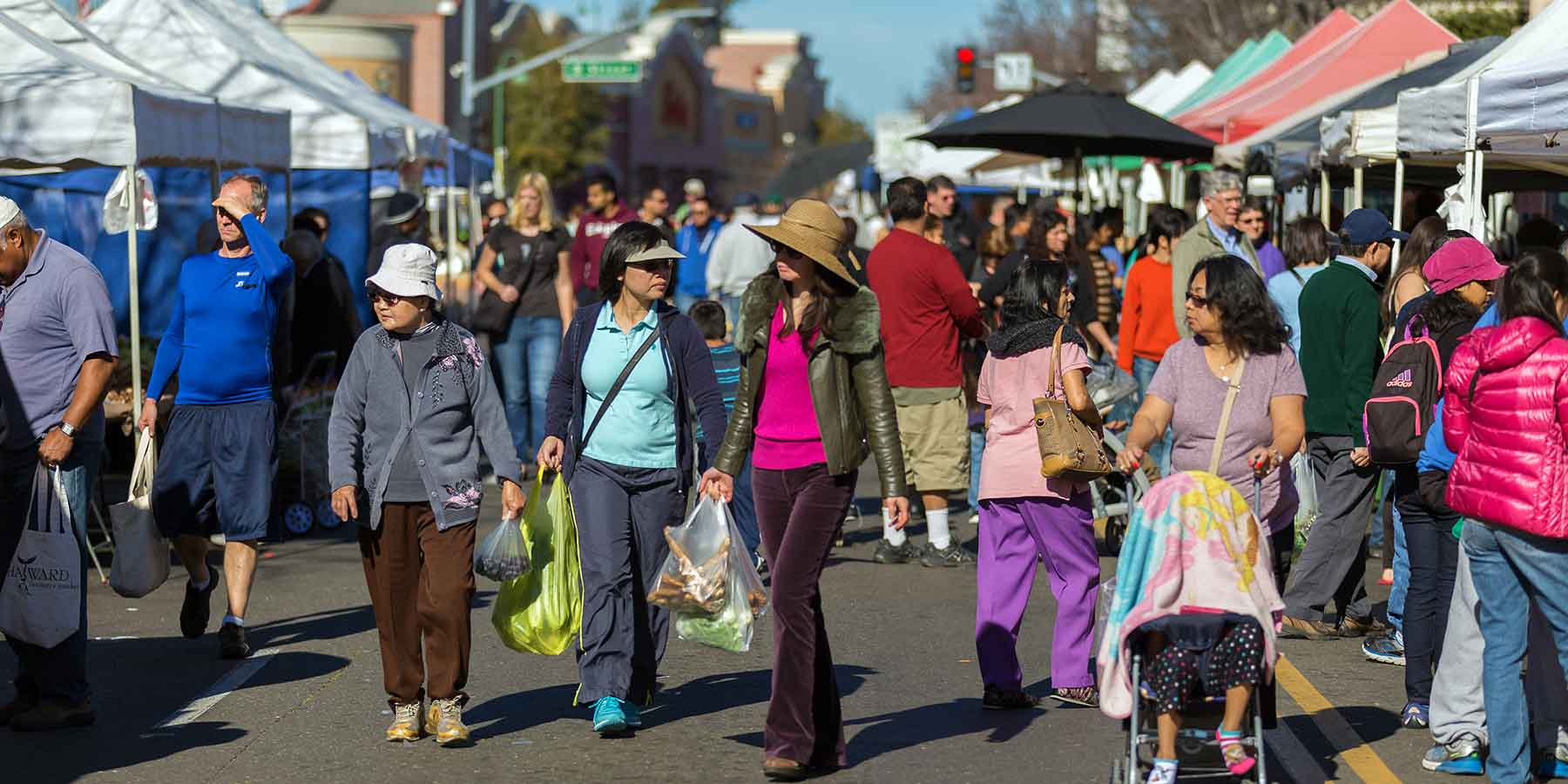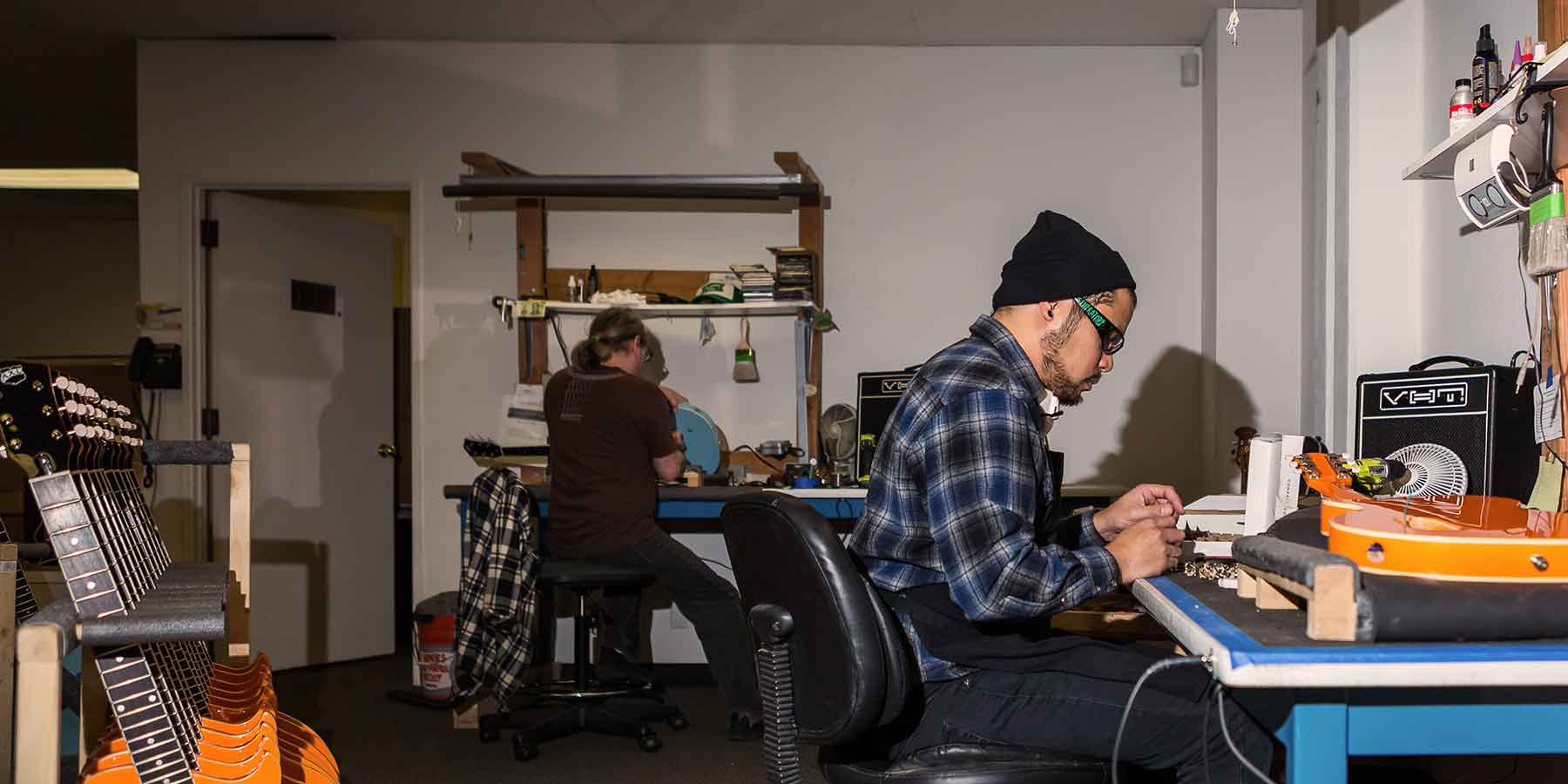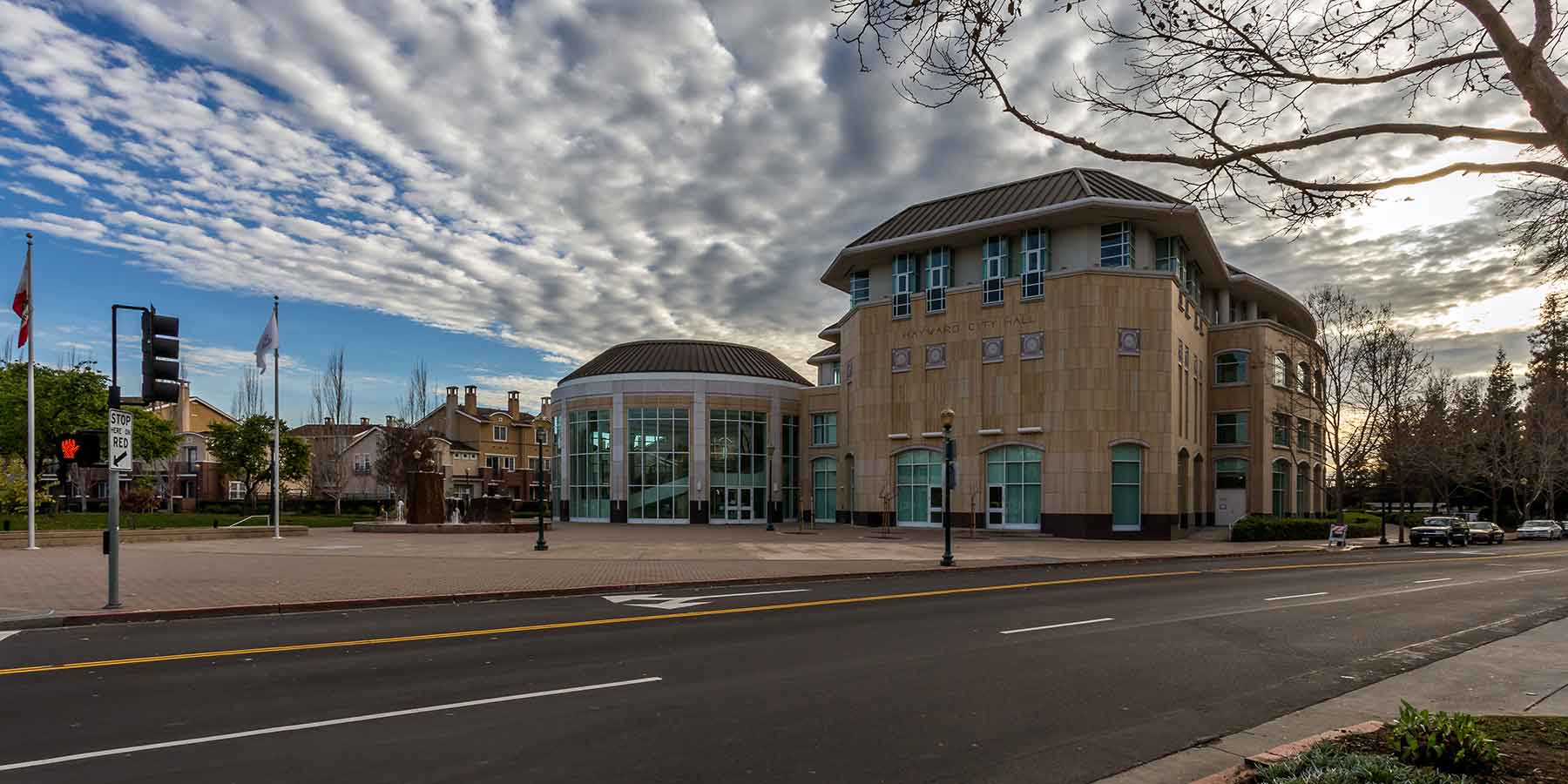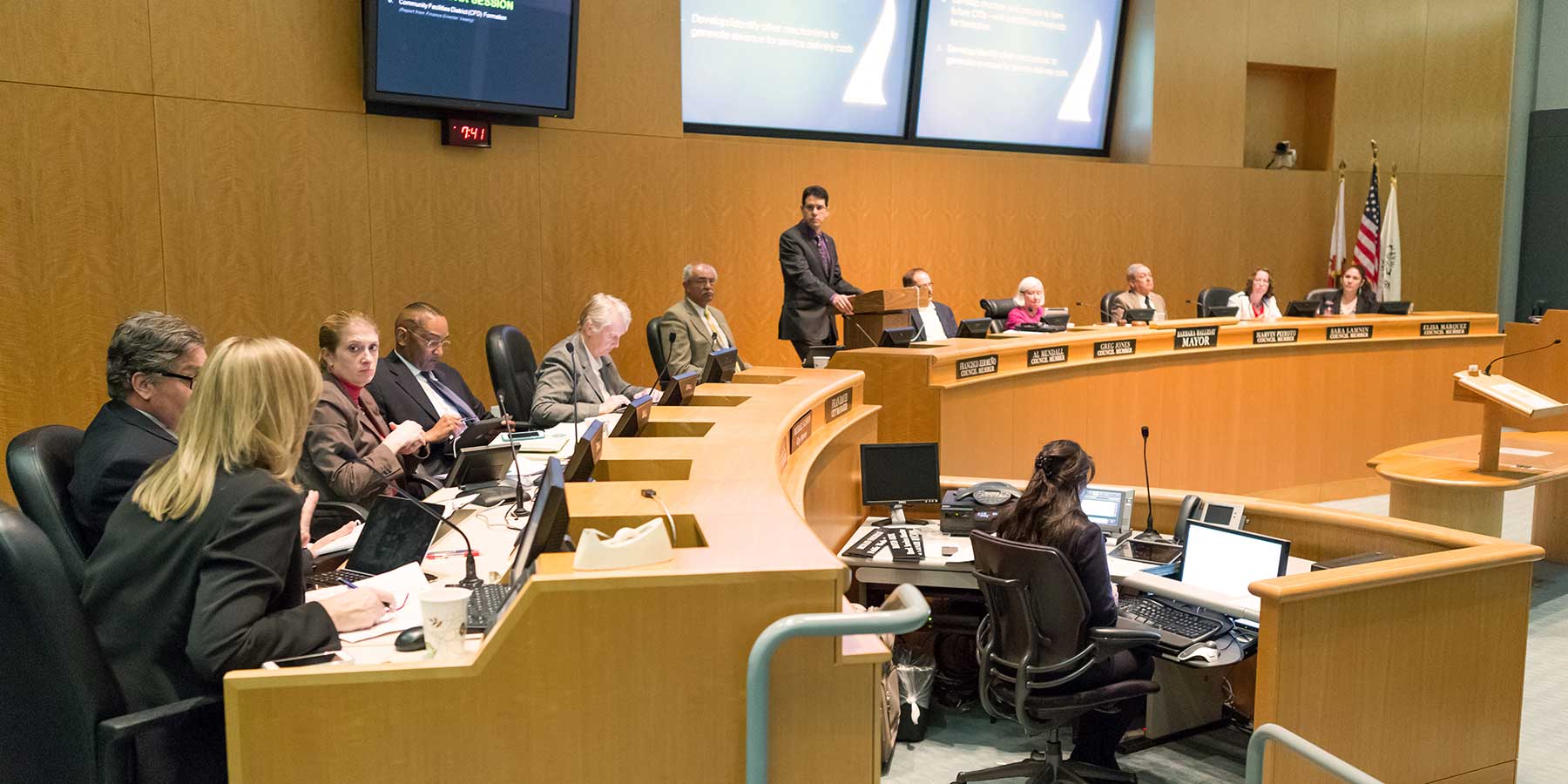Housing Element Introduction
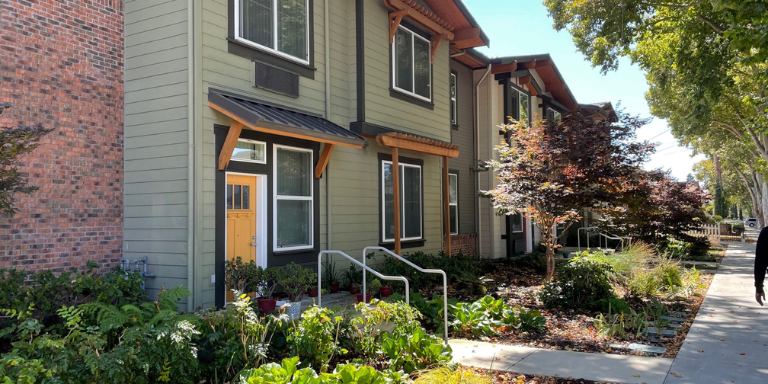
1.1 Housing Element Purpose & Content
The State of California has stated that the availability of decent and suitable housing for every California family is “a priority of the highest order.” This objective has become increasingly urgent in recent years as communities across the state struggle to meet the housing needs of all their residents. The Housing Element is the primary tool for cities and counties to create a road map to meet their housing goals. The Housing Element is a comprehensive strategy for encouraging development of safe, decent, and affordable housing for all residents and preventing housing loss. The Housing Element must include:
- Identification and analysis of existing and projected housing needs, resources, and constraints;
- A statement of goals, policies, quantified objectives, and scheduled programs for preservation, improvement, and development of housing;
- Identification of adequate sites for housing;
- Assessment of the City’s fair housing issues; and
- Adequate provision for existing and projected needs of all economic segments of the community.
The Housing Element helps the City determine how to address existing and future housing needs and plan for future growth. These housing policies and actions do not commit the City to construct new housing units, but they do identify ways in which Hayward will encourage development of housing intended to meet the housing needs of current and future residents during the Housing Element update cycle. This Housing Element represents the City of Hayward’s 6th Housing Element cycle and will be carried out from 2023 through 2031.
1.2 Relationship to Other General Plan Elements
The City of Hayward’s 2040 General Plan was adopted in 2014 and is comprised of several State mandatory elements including: Land Use and Community Character, Mobility, Housing, Community Safety, Natural Resources, and Hazards. The General Plan also addresses several other optional elements including Economic Development, Public Facilities and Services, Education and Lifelong Learning, and Community Health and Quality of Life.
All elements bear equal weight, and no element has legal precedence over another. California Government Code Section 65583 (c) requires the Housing Element to maintain internal consistency with other General Plan Elements. For example, residential density limits established by the Land Use Element are reflected in the Housing Element and form the basis for analyzing residential capacities within the City. The Housing Element is also consistent with the (draft) Environmental Justice Element by avoiding concentration of lower-income housing in a disadvantaged community as defined by Government Code Section 65302(h)(4)(A) and Health and Safety Code Section 39711. California law requires that the Safety Element be updated during each update of the Housing Element if additional information relating to climate adaptation or resilience becomes available. When any element of the General Plan is amended in the future, the City will review the Housing Element and, if necessary, amend it to ensure internal consistency is maintained.
1.3 Housing Context
Hayward’s rapid growth has sparked the development of Priority Areas as part of the Bay Area’s Regional Transportation Plan and Sustainable Communities Strategy. These areas are suitable for future growth and have the potential to create walkable, compact development with integrated transportation systems. Priority Development Areas include downtowns, employment centers, corridors, neighborhoods, and districts served by regional transportation. Hayward has five Priority Development Areas:
- The Downtown City Center
- The Cannery Transit Neighborhood
- The Mission Boulevard Mixed-Use Corridor
- The South Hayward BART Mixed-Use Corridor
- The South Hayward BART Urban Neighborhood
Housing in these priority areas include high-density and mixed-use development. Typical building types include a mix of housing types including townhomes, duplexes, tri-plexes and four-plexes, multi-story apartments, and multi-family homes. The further away from the Priority Development Areas, housing types are mostly suburban and lower in density. This includes single-family homes, accessory dwelling units, and ancillary structures on large lots.
1.4 Hayward's Guiding Vision for the Community
Hayward’s vision for the community embraces a vibrant, safe, and prosperous community that supports the diverse humans that live, work, and play in Hayward. This vision includes supportive youth services and excellent public schools to attract and retain families, and an expanded network of parks and recreational activities for all ages. A community that fosters life-long learning will include programs and activities that integrate college communities into local businesses to create a college culture and sense of college and community pride. Access to jobs will encourage long-term residency and result in a robust and business-friendly community, creating unique clusters of economic opportunities. Thriving commercial centers with pedestrian-friendly design will attract businesses, shopping, and dining in Downtown Hayward. Downtown will emerge as the heart and soul of the community and inspire residents to live an active healthy lifestyle.
Mixed-use and high density residential development will be supported by an interconnected network of safe, affordable, dependable, and convenient transportation options. Utilities and improvements to technology infrastructure will ensure that the community is resilient and prepared to survive impending disasters such as wildland fires and sea level rise. Increased and enhanced connectivity in the Baylands, hillsides, and regional parks will also protect environmental resources and mitigate impacts of rising sea levels.
1.5 Organization of the Housing Element
Per California Government Code Sections 65580-65589, a housing element must consist of the following components:
- Review of the previous Housing Element: This section reviews the results of the goals, policies, and programs adopted in the previous Housing Element and compares projected outcomes with actual achieved results.
- Housing Needs Assessment: This section reviews the existing and projected housing needs of the community. It provides a profile of socio-demographic information, such as population characteristics, household information, housing stock, tenure, and housing affordability. The assessment also considers local special housing needs, such as, seniors, farmworkers, homeless, large households, and female-headed households
- Resources and Inventory of Adequate Sites: This section provides resources and an inventory of adequate sites that are suitably zoned and available within the planning period to meet the jurisdiction’s fair share of regional housing needs across all income levels.
- Governmental and Nongovernmental Constraints: This section identifies and analyzes impediments to housing production across all income levels.
- Fair Housing Assessment: This section provides a summary of contributing factors that serve as barriers to fair housing choice and access to opportunities in Hayward.
- Housing Plan: This section provides a statement of the community’s goals, quantified objectives, and policies to maintain, preserve, improve, and develop housing. It also provides a schedule of meaningful actions to be taken during the planning period to achieve the aforementioned goals, objectives, and policies. It includes quantified objectives for new construction, rehabilitation, and conserved units by income category (i.e. very low, low-moderate, and above-moderate) to make sure that both the existing and the projected housing needs are met, consistent with the City’s share of the RHNA.
The document was supported by comprehensive research and analysis which are compiled in appendices at the end of the document:
- Appendix A: Public Participation Report
- Appendix B: Housing Needs Assessment
- Appendix C: Housing Resources and Sites Inventory
- Appendix D: Housing Constraints
- Appendix E: Review of Past Accomplishments
- Appendix F: Fair Housing Assessment
1.6 Data Sources & Methods
Data from a variety of sources is used to complete the Housing Element. The most commonly cited source is the U.S. Census, which provides consistent demographic characteristics that are widely accepted. The American Community Survey is a feature offered by the U.S. Census and includes five-year estimates on population and demographic characteristics. Other data sources include the following:
- Alameda County Collaborative
- Association of Bay Area Governments (ABAG)/Metropolitan Transportation Commission (MTC)
- California Department of Housing and Community Development (HCD)
- California Housing Finance Agency
- California Tax Credit Allocation Committee
- Comprehensive Housing Affordability Strategy (CHAS)
- California Department of Finance (DOF)
- Home Mortgage Disclosure Act (HMDA) lending data
- Regional Homeless Point-in-Time Count
- State Employment Development Department (EDD) data on wage and labor statistics
- United States Department of Housing and Urban Development (HUD)
- Let’s House Hayward Strategic Plan (2021)
- Hayward Strategic Roadmap (2021)
- City of Hayward Displacement Study, HR&A Advisors Inc. (2021)
- Park Impact Fee Feasibility Analysis, Community Attributes Inc. (2019)
- Traffic Impact Fee Feasibility Findings and Jurisdictional Comparisons, Community Attributes Inc. (2022)
1.7 Summary of Public Participation
The Housing Element must reflect the values and preferences of the community. Accordingly, community participation is an important component of the development of this Element. Government Code Section 65583(c)(8) states that the local government must make “a diligent effort to achieve public participation of all economic segments of the community in the development of the housing element.” This process not only includes community members, but also participation from local agencies and housing groups, community organizations, and housing sponsors.
Hayward provided opportunities to solicit input from stakeholders and community members through interviews, surveys, a project-specific website, a housing simulation exercise, community events, and public meetings. To jumpstart the outreach process, the City compiled and contacted more than 175 stakeholders (complete list provided in Appendix A) and organizations that serve special needs households and renters, provide affordable housing, and offer fair housing services to inform the organizations about the Housing Element Update. Staff asked organizations to forward the information to their stakeholders and requested assistance and partnership in community outreach.
These entities were included in all notifications associated with the Housing Element update, including community events, housing survey, and a housing simulation exercise. A summary of the public participation is detailed below. More detailed information on the public engagement program is available in Appendix A.
Public Noticing
To reach the largest and broadest spectrum of community members and stakeholders, Hayward utilized the following notification methods throughout the Housing Element update process.
- Advertisement in The Stack Newsletter mailed to all addresses (approximately 160,000) within City limits.
- Regular posts to the City’s social media accounts, including NextDoor, Facebook, Twitter, and Instagram, announcing project website launch, survey, and a housing simulation exercise, public meetings and release of the Draft Housing Element for public review.
- City staff developed email and mailing lists of community and advocacy groups, non-profits, faith-based organizations, school-based organizations, mobile home park associations, homeowners associations, disability advocates and neighborhood groups to provide outreach and regular updates on the project. In addition, the City is maintaining an “interested parties” list for those who have requested regular updates about the Housing Element, Climate Action Plan, Environmental Justice and Hazards Element Updates. See Appendix A for full list.
- The City developed flyers in English and Spanish advertising the project. A total of 48,500 flyers were mailed out to homeowners, multi-family housing complexes and individuals living in mobile home parks. In addition, City staff handed out flyers at 18 locations throughout Hayward including the BART stations, farmers markets, supermarkets, retail establishments and laundromats and at community events.
Community Events
Bilingual Informational Gallery Event
The City prepared an interactive, in-person, mobile gallery with posters in English and Spanish on the topics of history of Hayward, the Housing Element, the Climate Action Plan, Environmental Justice and Hazards to provide people with the opportunity to learn about the project on their own time. The housing element poster explained the housing crisis, what a Housing Element is, chapters included in the Housing Element, how the Housing Element helps with the housing crisis, and statistics of housing in Hayward through a visually-appealing poster. Gallery event posters included Spanish translation and a QR code where participants could go to the project website for additional information. Starting in January 2022, the galleries were placed at the Downtown Hayward Library, City Hall and were used at events at the Farmers Market, BART, the NAACP Offices, Chabot College, and the Alameda County Transportation Offices which has approximately 400 Hayward employees.
NAACP Events
On April 30, 2022 and May 21, 2022, City staff attended community meetings at the Hayward NAACP Branch Office, located at 1218 B Street. The Hayward NAACP meetings provided an opportunity for African Americans and other minorities to learn about the Housing Element and to provide input on some of the issues they are facing in trying to secure affordable, quality housing in Hayward. The April 30 event was attended by approximately six people and the May 21 even was attended by approximately 40 people. In addition, staff from the Housing Division presented information on housing resources and assistance for people who may need some assistance in paying their rent and utilities due to the COVID-19 pandemic. Community comments received at these events included concerns about access to affordable housing and transportation options, limitations on rent increases, not requiring stringent background and credit checks for rental housing and subsidized housing specifically, and general inquiries about rental and mortgage assistance programs.
Hayward Promise Neighborhood
On May 21, 2022, City staff attended a Hayward Promise Neighborhood (HPN) community meeting at Tyrrell Elementary School on May 12, 2022. The HPN was established with a federal grant from the US Department of Education, and it supports a collaborative partnership between government agencies, non-profits, businesses, and educators to support residents and students who attend partner schools within the Hayward Unified School District. The HPN provides comprehensive, high-quality educational and social support to ensure the long-term health, safety, and economic well-being of the Jackson Triangle and South Hayward Harder-Tennyson neighborhood.
There were approximately seven people in attendance from the Community Childcare Council of Alameda County who live and work in Hayward as well as mothers whose children attend Tyrell Elementary School. The majority of attendees spoke Spanish and translation services were provided. General comments from the attendees included:
- Widespread concern that the cost of housing is too high.
- Request to apply for and be eligible for affordable housing opportunities as they become available in the community.
- Request for first time homebuyer’s programs
- Request for landlord/community meetings to discuss housing problems and tenants’ rights.
- Concerns about the neighborhood and safety including a concern about the high number of liquor stores in South Hayward compared to other parts of Hayward; increasing safety for pedestrians including pedestrian crossings and street lights; and, concerns about increases in homeless individuals within neighborhoods.
Housing Element 101 Informational Meetings with Committees, Planning Commission, and City Council
In the Fall of 2021, the City held Housing Element 101 informational meetings for the Housing and Homeless Task Force, the Planning Commission, and City Council to notify the public and decision-makers about the Housing Element Update. At the meetings, City staff provided an overview of recent State Laws, took comments on updates to the Affordable Housing Ordinance and introduced the Housing Element process. The meetings were public workshops and posted on publicly available agendas. While members of the public attended the meetings, there were no public speakers on the item. Task Force, Planning Commission, and Council comments centered on the following topics:
- Prioritize Housing Element outreach to underserved and hard to reach groups by getting out into the community; conduct outreach at schools and colleges; work with advocacy groups to reach special needs groups to determine actual housing issues and needs; and ensure that materials are translated into other languages.
- Keep equity and Affirmatively Furthering Fair Housing goals at the center of the project. Include policies to expand fair housing, reduce racial and income segregation, increase affordable housing opportunities, and use the housing element to educate about past policies such as redlining and housing discrimination.
- Focus on housing affordability and how to make high density housing more livable.
- Explore creative opportunities, actions and programs around financing affordable housing.
- Describe the barriers to market rate and affordable housing development and discuss ways the City can reduce barriers to development
Individual Meetings and Focus Groups
January through May 2022, City staff met with representatives from various advocacy and interest groups including Community Resources for Independent Living (CRIL), the Hayward Promise Neighborhood, and NAACP to notify and partner with the groups to get the word out about the Housing Element Update.
On June 10, 2022, the City conducted a focus group with CRIL consumers. While CRIL advertised the opportunity widely, a total of four individuals participated and provided insights into the combined issues of housing and transportation accessibility for individuals with disabilities. Three of the individuals are renters and one is a homeowner who works with CRIL consumers. Specific issues raised during the focus group included: the high cost of housing, particularly for individuals on fixed incomes; the need to live with roommates, caregivers or others to assist with the activities of daily living; difficulty accessing and navigating public transportation and rideshare systems to get to work, doctor appointments and other locations; the desire to see infrastructure improvements (sidewalks, trails, open space and parks) built to be accessible to individuals with disabilities; the desire to see affordable housing constructed in close proximity to commercial and service uses; and, ensuring that landlords maintain and upgrade buildings to ensure accessibility for all individuals.
The City will continue to reach out to various groups to see if there is an interest in conducting additional focus groups.
Community Partner: Chabot College
Chabot College is a public community college in Hayward, as part of the Chabot-Las Positas Community College District. Chabot College has served the communities of Hayward, Union City, San Leandro, Castro Valley, San Lorenzo, Ashland, Cherryland, Fairview, and Sunol for over 50 years, and is a nationally recognized leader in community college innovation of education experiences.
The City contracted with Chabot College to have students from two English classes interview Hayward residents around the issues of housing including housing conditions and concern about eviction or not being able to pay mortgages; experiences with neighbors; experiences with discrimination; perceptions of concentrations of poverty within Hayward; perceptions of homelessness; experiences of environmental pollution; rankings of importance for schools, transit, jobs, retail, libraries and other community assets; and hopes and dreams for the future. The students interviewed 388 Hayward residents and the responses were mapped by the City’s Geographic Information Systems technicians and is available at maps.hayward-ca.gov. The interviews are summarized in Attachment A and quotes from the interviews are included throughout this document. Figure 1 shows the location of interviewees that participated in the housing survey.
On April 25, 2022, City staff attended an event at Chabot College where professors and approximately 30 students discussed topics related to housing, gentrification and displacement, pollution and dumping, and other findings from the interviews. Both interviewers and some interviewees attended the meeting to listen to student presenters. City staff present at the event were able to provide translation services as needed.
Project Website
To further facilitate the distribution and gathering of information, the City created a separate project website dedicated to the Housing Element update. The project website provided detailed background information on the Housing Element, frequently asked questions, links to upcoming and past event materials, links to articles and videos on the topics of Housing, Climate Change, Environmental Justice among other resources. The videos on housing included such as the legacy of redlining, the History of Russell City in Hayward and explainers on zoning among other topics (https://haywardhousingandclimateupdate.com/learn-more/). Project materials associated with the Housing Element update were regularly posted on the project website, including documents from the gallery event, information for upcoming events, and virtual workshop PowerPoint presentations and video recordings. A link on the website enabled people to sign up for project email updates and provide comment at any time throughout the project process.
To encourage public engagement and to connect the Housing Element work to people’s lived experiences, the City posted a story on Instagram asking Hayward residents what three words they would use to describe their housing situation and added a banner on the project website directing people to share their “three word stories” around their housing situation in Hayward.
The input provided through Instagram and project website included the following:
- “Not Senior Friendly”
- “Noisy, Dirty, Congested”
- “Real Bad Mold”
- “Things Getting Worse”
- “Blessed, Loved, Expensive”
- “Own, Respect, Blessed”
- "Comfortable, Inaccessible, Cost-Effective”
- “Pretty Darn Good”
The three-word theme was carried through the interviews conducted by Chabot students which are included as an attachment to this report.
In addition to the three-word stories, people posted general comments through the website that encompassed the following themes:
- A desire to see more assisted living options and deed restricted low-income housing for seniors.
- A desire to see more high density and mixed income housing near transit.
- An ordinance to prevent smoking in multi-family residential complexes.
- Concern around increased air pollution related to traffic and questions about how the City and region will provide water necessary for increased housing and population given the ongoing drought in California.
- A letter from YIMBY/Greenbelt Alliance urging the City to consider rezoning to allow for higher density development.
- A letter from a consortium of various community-based organizations providing guidance and recommendations on public participation.
- A letter from a Hayward resident and UC Berkeley graduate student commenting on AFFH requirements, the City’s Balancing Act tool and assumptions related to development in certain areas, and general comments on counting ADUs and other sites in the inventory.
The project website is available at: https://haywardhousingandclimateupdate.com/.
Balancing Act: Housing Sites Simulation
The City made available a housing sites simulation from April 8, 2022 to May 13, 2022. The sites simulation gave the public an opportunity to provide comments and recommendations relating to housing in Hayward. The activity was sent out via email lists to interested parties and was advertised on the City’s social media and website. There were 19 participants that provided 44 comments on 1,722 potential housing sites. The input provided by the participants is included in Table 1. Input gathered through this activity was used to guide the City’s site selection process.
Table 1 - Balancing Act Simulation Summary
FOCUS AREA | RECOMMENDATIONS |
|---|---|
Caltrans Corridor |
|
Downtown Area |
|
Mission Boulevard |
|
Residential and Mixed-Use Area |
|
Citywide |
|
Housing Survey
The City prepared and distributed Surveys inquiring about housing, access to resources, and experiences with discrimination to all individuals in the City of Hayward. The project website hosted an online housing survey for 60 days (from January 10 to March 10, 2022). The surveys were translated into Spanish and Mandarin. To encourage participation, the City advertised a drawing for five $50 Hayward business gift cards for individuals who completed the survey. There were 64 survey participants (60 surveys completed in English, 3 surveys completed in Spanish, and 1 survey completed in Chinese). The input provided by the participants included the following major themes:
- High Cost: Difficulty finding affordable housing, paying the deposit for rental housing, and monthly rental housing costs were identified as housing challenges personally experienced by survey participants.
- Housing Accessibility: Affordability, homeownership, and availability of housing were identified the most urgent housing issues in Hayward.
- Need More Homes: Entry level or starter homes, co-living housing, apartments, and condominiums were identified as housing types needed in Hayward.
- Housing Types: Mixed support of diversifying housing types and increasing housing overall in Hayward.
City Council and Planning Commission Study Session
On June 23, 2022, the Planning Commission held a Work Session on the draft Housing Resources, Inventory and Housing Plan of the 2023-2031 Housing Element. At that meeting, the Commissioners asked clarifying questions such as how many properties on the sites inventory are publicly owned, how many units are at risk of conversion from affordable to market rate housing during the next cycle, whether the sites inventory identified tenure of housing units, and the technical definition of “cost burdened.” One Commissioner voiced concerns about the loss of local control due to recent State Laws. Other Commissioners suggested that the City Council consider ground leasing publicly owned properties to developers rather than selling the land; voiced a desire to see mixed income and mixed tenure projects so that low- and moderate-income households could have the opportunity to purchase homes; and said that education and outreach related to resources and assistance should remain a major priority in the next cycle. One member of the public spoke and agreed that resources should be allocated to a mix of rental and ownership opportunities at all levels of affordability.
On July 5, 2022, the City Council held a Work Session on the Housing Resources and Inventory and Housing Plan. At that meeting, Councilmembers asked questions about specific sites and how the inventory was derived; expressed a desire to protect industrial and commercially zoned land; asked general questions about the RHNA and the numbers in Hayward relative to the region and the area median income of Hayward versus the region; examine eviction rates, foreclosures and understand the investors who are purchasing housing in Hayward; recommended that the City partner with Chabot College and Cal State East Bay to expand housing for students; wanted to ensure the Housing Element prioritized seniors and other households on fixed incomes; and, expressed concerns about the ongoing drought and impacts of water supply on potential development.
At that meeting, four members of the public spoke about the need for affordable housing; opportunities for low income households to be able to purchase homes; additional housing for seniors and individuals with disabilities and special needs; the desire to see complete streets, services and assistance for individuals with disabilities and special needs; and, a concern about displacement. One individual representing the Carpenters Union asked the City Council to adopt a policy in the Housing Element requiring developers to use union labor that provide apprenticeship programs, retirement and health benefits.
Draft Housing Element Available for Public Input
Hayward’s Draft 6th Cycle Housing Element was posted from July 14, 2022 through August 14, 2022. Fourteen responses were received during the public review period from multiple members of the community and organizations such as Bay Area Rapid Transit (BART), Campaign for Fair Housing Elements and YIMBY Law, East Bay for Everyone, Transform CA. In response to public comment, City staff made changes to the Sites Inventory and revised the housing policies and programs to reflect public input on the Draft Housing Element. A comment matrix with the commenter, comment, and City response is provided in Appendix A.



